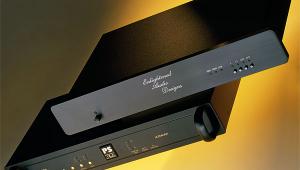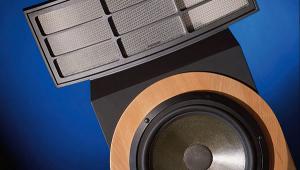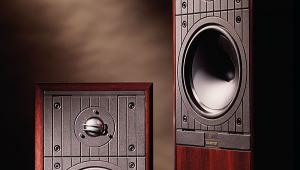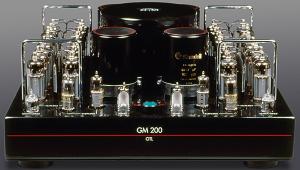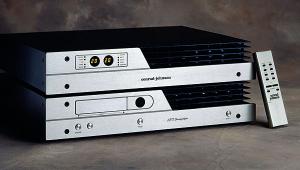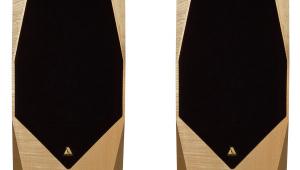A Very British Amplifier Page 2
Simultaneously released with the SA200, the C200 physically is a low-profile unit which may be tucked beneath the power amplifier when the latter is fitted with the optional larger side panels. Many facilities are provided and A&R has clearly been aware of the need for an optional 'straight line' mode. Consequently, the tone controls here may be bypassed. Interestingly, the designer also realised that many of the subjective criticisms of poor tone control systems concerned their audibility when switched in.
While speculation concerning the change in sound quality due to the accompanying circuitry is sometimes justified, equally often the audible changes may be due to a phase inversion, a change in gain, or a non-flat frequency response at the indicated zero positions, or a combination of any – or all – of these factors. Both by design and by specific calibration on the final test, the C200 tone controls are adjusted so that these effects are avoided. The result is that any change is negligible when the tone control circuitry is engaged.
As supplied, with facilities for moving-coil and moving-magnet cartridges, the C200 costs around £300, with a reduction of £50 or so for deletion of one or other of the two cartridge inputs, their plug-in space then occupied by a passive auxiliary input board. Alternatively, both may be line level, or moving-coil or moving-magnet types.

Before describing the input options the output possibilities need covering. As standard, a passive so-called output board is fitted carrying the multiple tape socketry and the main output. This board may be detached on removal of the moulded exterior casing, and an active crossover board substituted. A&R has notable experience in the electronics for active speaker systems, this gained with various combinations of the A60 series, and while the SA200 is obviously a passive partner for the C200, in the context of an active system, the sub-amps might logically comprise a C200 with a pair of A60X crossover amplifiers capable of typically 50W programme per output into 8ohm.
With one cartridge output, such a bi-amped system would cost around £600 and possess a 200W total capacity, but using an SA200 the output would be 500W total, setting one back around £900 and representing a very powerful system.
Surveying the C200's front panel, allows a rundown of the facilities. The group of three vertical buttons on the left comprise the selector section – disc/aux and tuner, the aux doubling as a second disc when suitably adapted. The input options possess considerable versatility and will match virtually any known cartridge. Furthermore, the selection offered here will give the owner some opportunity to 'fine tune' his own cartridge sound, particularly where moving-magnet types are involved.
The next switches comprise Tape Dub, 1 to 2 and 2 to 1, followed by a rotary tape monitor control. Centrally located, the volume and balance controls are concentric and are followed by bass and treble with zero detents but uncalibrated scales. Unmistakable clock settings are used instead, these specified as 1dB increments of lift and cut in five steps. The points of action are specified at the 20Hz and 20kHz frequency extremes and hence offer rather subtle tonal correction.
The remaining buttons are responsible for tone defeat or cancel; filter, a rather high frequency 'rumble' operative at 30Hz with a 12dB/octave slope; 'mono'; and finally power on/off. Nearby is the headphone socket; engagement of a phone jack automatically mutes the connected power amplifier.
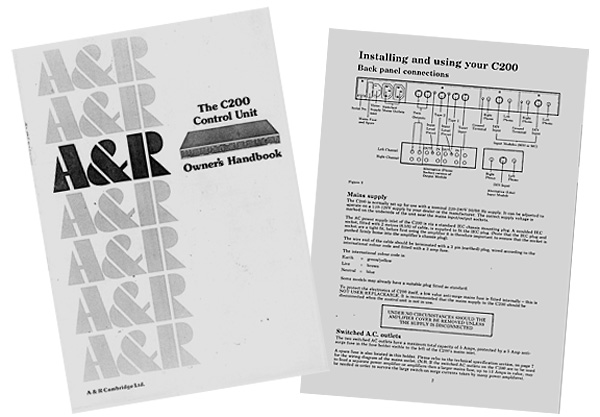
On The Rails
The rear panel carries the IEC mains socket, with two complementary IEC outlets. All the socketry is DIN, with the exception of the disc inputs which are duplicated in phono. Tape replay gain may be adjusted to match the system properly via two slotted-head potentiometers, while the disc options are actuated via miniature DIL switches accessible on the underside of the unit. Clear information is printed on the bottom cover of the preamp regarding the settings, connections, plug wiring and matching levels.
Circuit information was not made available by the company, and the following had to be gleaned from an internal inspection. Fed from a small toroidal transformer located in a separate screened box, the circuits would appear to employ two power rails, these individually stabilised by IC regulators for each channel. Passive RC filtering is used thereafter in the power feed to each circuit board. Meanwhile, discrete transistors are employed throughout except for the tone control stage and the headphone amplifier.
The latter comprises a separate plug-in board to produce the high quality drive to the headphones, and this is separate from the C200's normal output amplifier. The overall circuit here revolves around the selector switching, these involving equalised input signals, whether from the MM/MC disc cards or from other sources – tuner or tape. These are fed, without buffering, to a 20kohm volume control.
Complete Entities
This a rather low value since it is responsible for the preamp's total line level input resistance. Normally input impedances are in the region of 100kohm and it is just possible that some older (valve?) equipment will be affected by this. However, most modern sources should happily drive a 20kohm input. The variable level tape sockets, though are lower still at 10kohm. As for the disc boards, these are complete entities. For example, the moving-coil board includes both a head amplifier and full RIAA equalisation.
A buffer amplifier follows the volume control feeding the non-inverting feedback-type tone control, which may easily be bypassed. The mono switch and balance control follow, leading to the output amplifier which incorporates a switchable subsonic filter. A delayed relay mutes the output to 'ground' on switch on, until circuit conditions are stable.
![]() Sound Quality
Sound Quality
Used with the SA200 power amp, the combination gave a good account of itself, though we did have some slight misgivings. A separate audition indicated that these were down to the preamp rather than the SA200.
It is difficult to convey our feelings in words. The C200 did possess many positive attributes – it was felt to sound both open and neutral, with a pleasant tonal balance and a good presentation of stereo information. Transients seemed fairly clear and precise while the general definition was quite satisfactory over most of the frequency range. Nonetheless, it proved a disappointment overall – perhaps we were just expecting too much, especially in view of the success of the SA200.
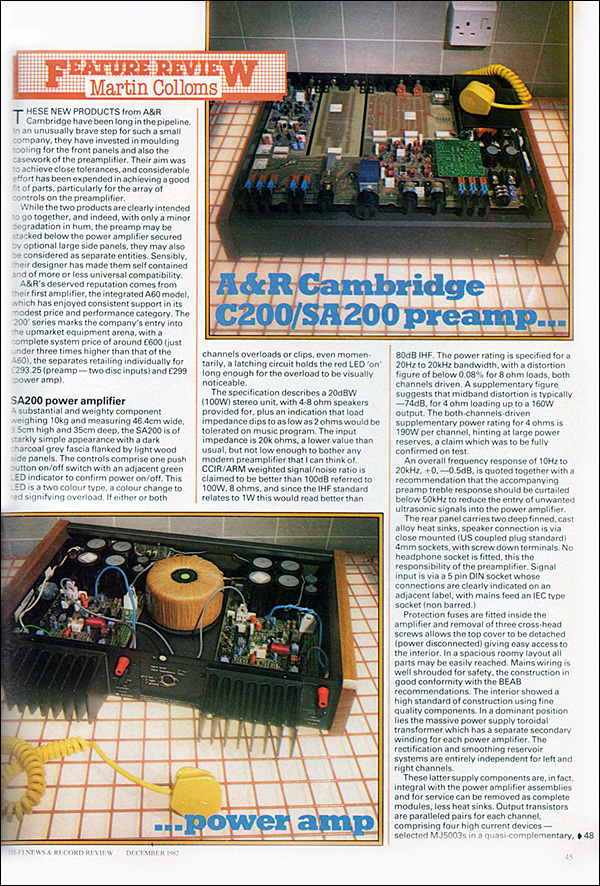
There was a feeling of blandness and a mild suppression of detail, while the bass showed a lack of apparent weight with reduced definition. The treble demonstrated a slight 'lispiness' spread across the stereo stage, reducing the precision and apparent depth. Compared with other and better preamplifiers, although these were admittedly often more costly, the C200 sound seemed to be less 'interesting', and all things considered we felt the subjective performance to be average.
Conclusions
The C200 undeniably has a lot going for it. The constructional quality was high, the input/output facilities exceptional, and it delivered a fine performance by conventional standards. Subjectively judged, however, it gained a rather lukewarm reception.
Again it set a good standard, but it did not possess that edge which would give it the right to rank with the exalted few, certain of which are not too far removed in price from the C200. It remains well worth trying, but I feel the SA200 deserves a better partner than this.










